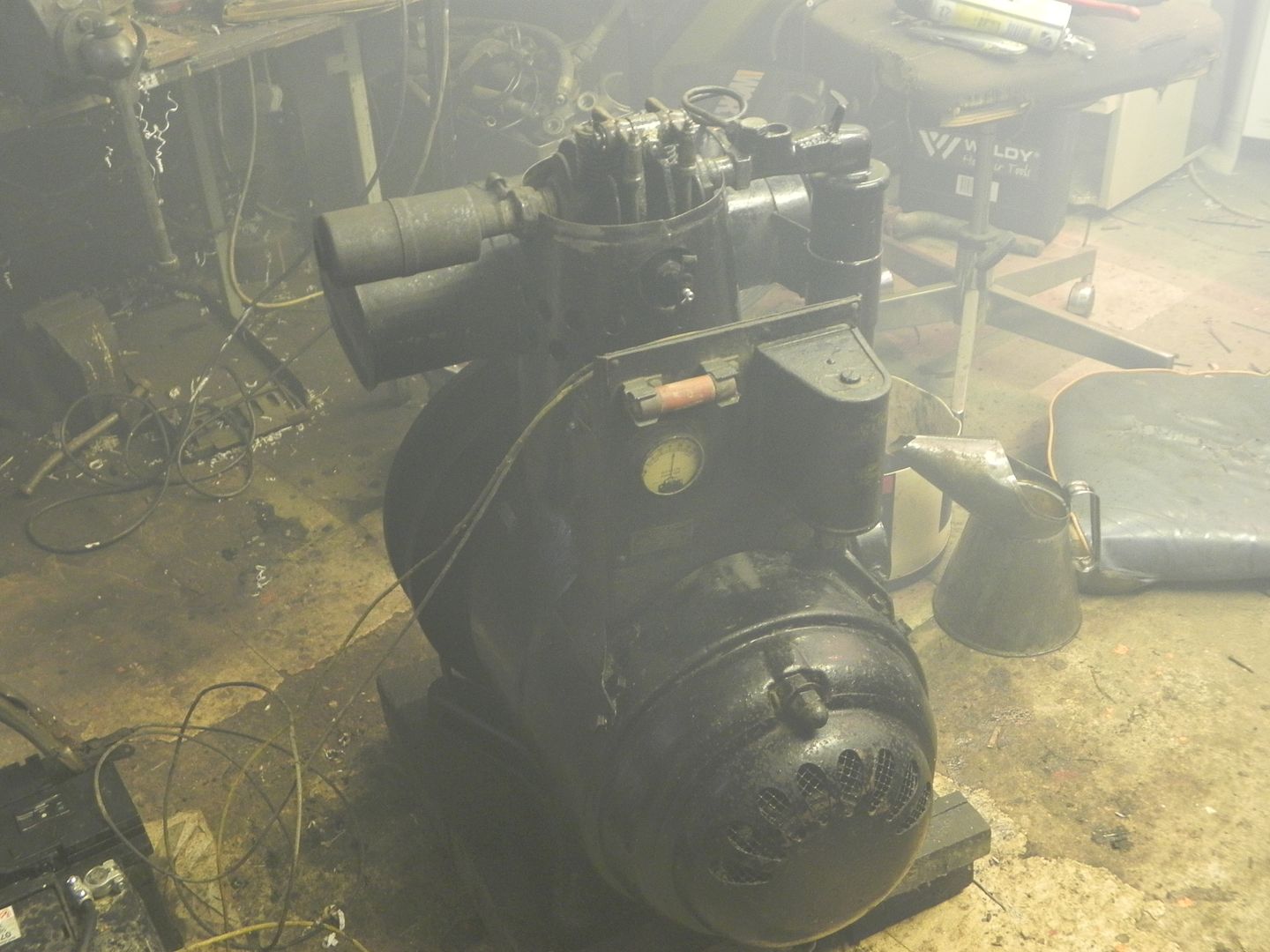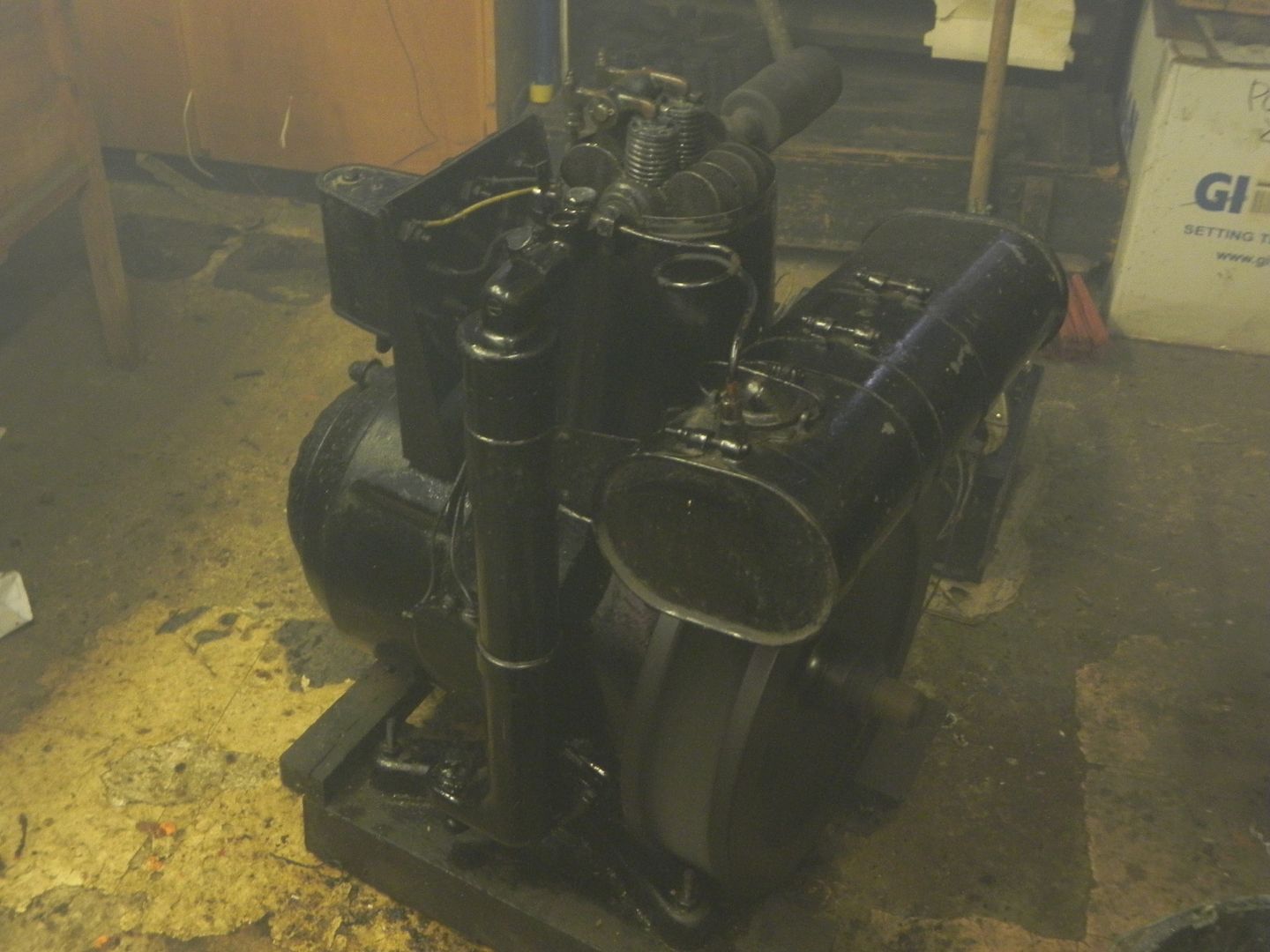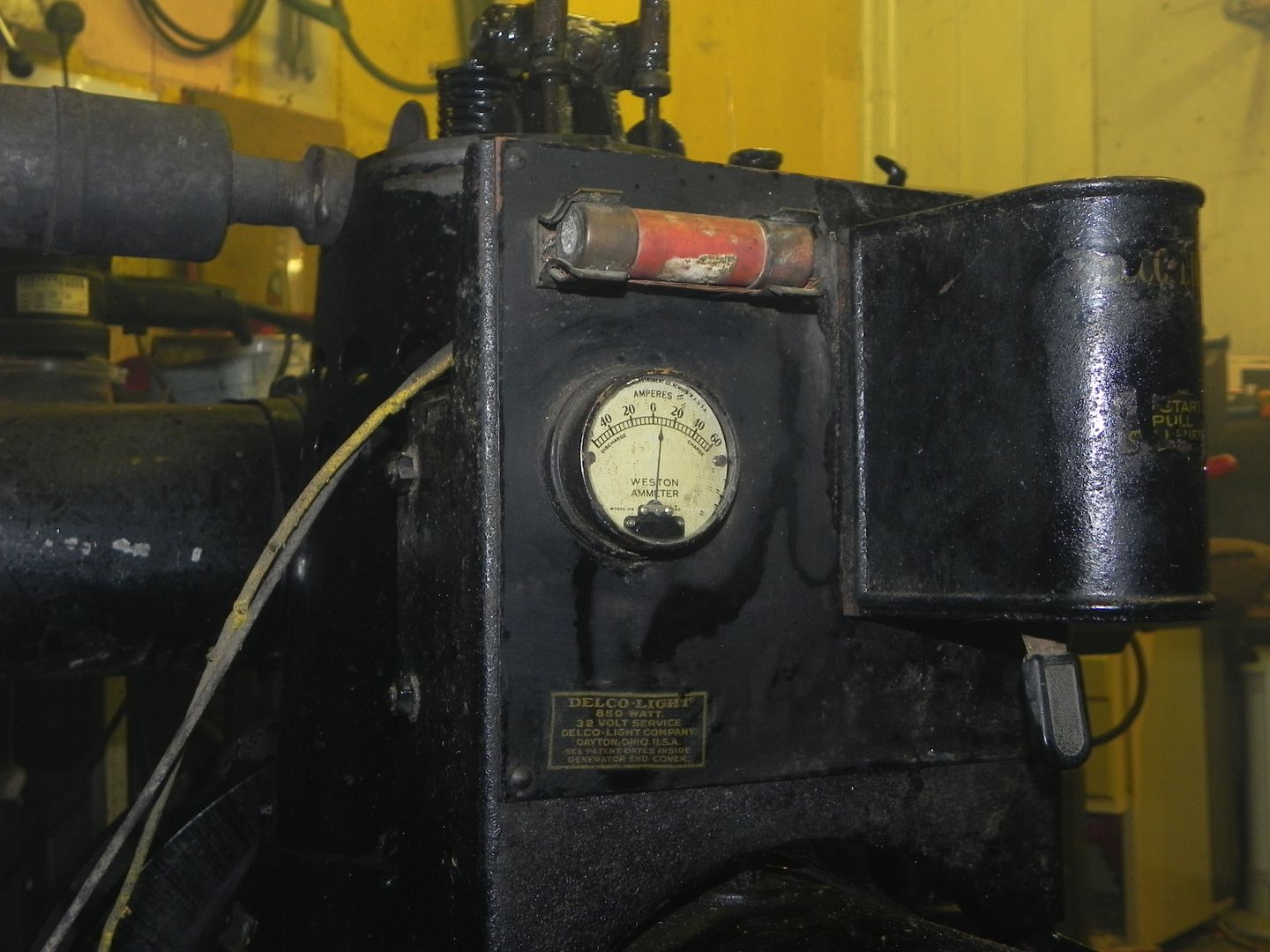Preparing for Meddo.
Posted: Wed Sep 11, 2013 10:06 am
Meddo is the end of next week so, as it was raining today, I decided to get the Delco Light Manufacturing Unit out of the corner of the workshop and prepare it for the trip.
I have had this unit since the early 1980’s but have known it for about 10 years previous to that. It was the electrical power source in a friends parents’ house of Mersea Island off the Essex coast. It provided the lighting, pumped the water and provided power for a small workshop, all from batteries and the 32 Volt generator.
Richards father was a very well-travelled man and went all over the world in the early years of the last century, on one of his trips to the USA around 1919 he came across the Delco system and had one shipped back to the family home on Mersey Island. Back then the only source of lighting in the house was paraffin lamps as there was no gas or electricity on the island. The Delco was installed in their home around 1920 as far as we are aware. It came with a life time supply of Edison Light Bulbs and two huge glass batteries like aquariums. The system powered the well water pump and lighting for many years from an engine shed in the garden and was eventually put into storage around 1940 when electricity came to the island.
Richard asked me to have a look at the engine in the late 1960’s and to give a valuation, I went down and had never seen a similar unit, by now the batteries had gone but everything else was still complete, I put a price of around £100.00 on the system and left it at that. Years passed and I always remembered the engine, Richard and I talked about it over the years and, one Friday night, in 1983 I got a telephone call from his mother asking if I would like to buy the engine. The problem was that she had sold the house and garden for building land and the builder was clearing the garden. On the following Monday morning, he was going to demolish the engine shed and the engine with it, I had to get the engine that weekend. After much frantic running around I managed to borrow a pick-up and went to Mersea and collected the engine and water pump plus some of the workshop equipment and a couple of Victorian Garden Urns and brought them all back to Black Horse House.
Of course we had to see if the engine would still run, it had last worked in the 1940’s before being put into storage so I cleaned out the fuel tank, changed the oil, cleaned the points and coupled up three 12 volt batteries before starting to crank the handle, after about half an hour of cranking the engine suddenly fired and ran like a sewing machine. The starting problem was mainly due to having no instructions and having to work out the starting procedure as this engine does not have a carburettor, only a flap that controls the air flow.
We decided to show the engine on our stand at the Royal Norfolk Show in 1984 as part of our display and on setting up the stand and testing, we discovered that the engine has a self-starter, lifting a small lever into the “Run” position with a semi-charged battery connected, reverses the polarity of the generator and turns it into an electric motor which turns the engine. I had often wondered how Richards’ mother, a very slightly built lady, had managed to crank the engine when she had needed light or water now I knew.
The Delco has stood in the corner of my workshop since then looking a little lost, I have not shown it or started it for many years and it was only talking to Emiel’s friend on our last trip to Holland and who has a collection of small engines that the idea came to take the engine along to Meddo.
Yesterday I pulled it out of the corner, cleaned out the spiders, changed the oil and fuel in the tank and connected up three batteries a short while later the workshop was full of smoke and the thump of a 90 year old engine was ringing out.

Filling the workshop with smoke and noise!

Carburettor and fuel tank. At the base of the air intake pipe is an automatic oil level indicator.

The open valve gear, no rocker cover and the valves have to be hand lubricated as the engine has no oil pump. You can also see the priming hole which has to be filled with petrol for a cold start, the round thing behind it is the "strangler". For a cold start it is moved fully to the left and this shuts off the intake causing the petrol in the primer cup to be drawn into the engine. Once this is done the strangler is move slightly to the right and the engine fires up. The strangler is moved further to the right until the engine runs evenly. To stop, the strangler is pushed fully to the right and this causes the engine to draw only air rather than an air/fuel mix.

The charge dial with starting switch to the right.
Now I have just to get it loaded on the transport box behind Dotty and we are ready for the trip.
I have had this unit since the early 1980’s but have known it for about 10 years previous to that. It was the electrical power source in a friends parents’ house of Mersea Island off the Essex coast. It provided the lighting, pumped the water and provided power for a small workshop, all from batteries and the 32 Volt generator.
Richards father was a very well-travelled man and went all over the world in the early years of the last century, on one of his trips to the USA around 1919 he came across the Delco system and had one shipped back to the family home on Mersey Island. Back then the only source of lighting in the house was paraffin lamps as there was no gas or electricity on the island. The Delco was installed in their home around 1920 as far as we are aware. It came with a life time supply of Edison Light Bulbs and two huge glass batteries like aquariums. The system powered the well water pump and lighting for many years from an engine shed in the garden and was eventually put into storage around 1940 when electricity came to the island.
Richard asked me to have a look at the engine in the late 1960’s and to give a valuation, I went down and had never seen a similar unit, by now the batteries had gone but everything else was still complete, I put a price of around £100.00 on the system and left it at that. Years passed and I always remembered the engine, Richard and I talked about it over the years and, one Friday night, in 1983 I got a telephone call from his mother asking if I would like to buy the engine. The problem was that she had sold the house and garden for building land and the builder was clearing the garden. On the following Monday morning, he was going to demolish the engine shed and the engine with it, I had to get the engine that weekend. After much frantic running around I managed to borrow a pick-up and went to Mersea and collected the engine and water pump plus some of the workshop equipment and a couple of Victorian Garden Urns and brought them all back to Black Horse House.
Of course we had to see if the engine would still run, it had last worked in the 1940’s before being put into storage so I cleaned out the fuel tank, changed the oil, cleaned the points and coupled up three 12 volt batteries before starting to crank the handle, after about half an hour of cranking the engine suddenly fired and ran like a sewing machine. The starting problem was mainly due to having no instructions and having to work out the starting procedure as this engine does not have a carburettor, only a flap that controls the air flow.
We decided to show the engine on our stand at the Royal Norfolk Show in 1984 as part of our display and on setting up the stand and testing, we discovered that the engine has a self-starter, lifting a small lever into the “Run” position with a semi-charged battery connected, reverses the polarity of the generator and turns it into an electric motor which turns the engine. I had often wondered how Richards’ mother, a very slightly built lady, had managed to crank the engine when she had needed light or water now I knew.
The Delco has stood in the corner of my workshop since then looking a little lost, I have not shown it or started it for many years and it was only talking to Emiel’s friend on our last trip to Holland and who has a collection of small engines that the idea came to take the engine along to Meddo.
Yesterday I pulled it out of the corner, cleaned out the spiders, changed the oil and fuel in the tank and connected up three batteries a short while later the workshop was full of smoke and the thump of a 90 year old engine was ringing out.

Filling the workshop with smoke and noise!

Carburettor and fuel tank. At the base of the air intake pipe is an automatic oil level indicator.

The open valve gear, no rocker cover and the valves have to be hand lubricated as the engine has no oil pump. You can also see the priming hole which has to be filled with petrol for a cold start, the round thing behind it is the "strangler". For a cold start it is moved fully to the left and this shuts off the intake causing the petrol in the primer cup to be drawn into the engine. Once this is done the strangler is move slightly to the right and the engine fires up. The strangler is moved further to the right until the engine runs evenly. To stop, the strangler is pushed fully to the right and this causes the engine to draw only air rather than an air/fuel mix.

The charge dial with starting switch to the right.
Now I have just to get it loaded on the transport box behind Dotty and we are ready for the trip.